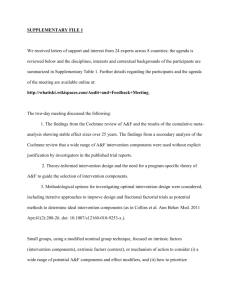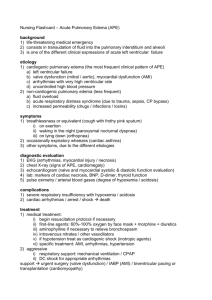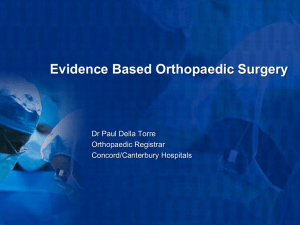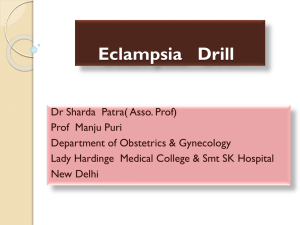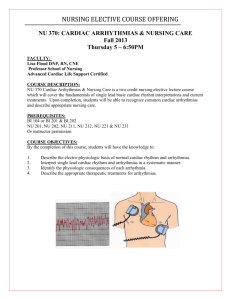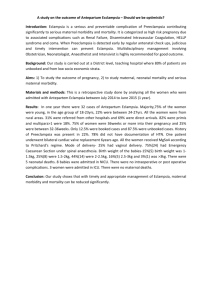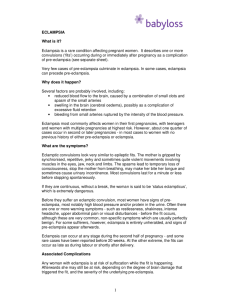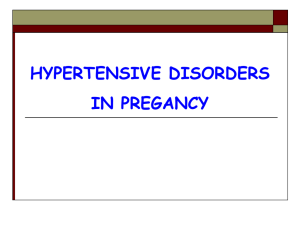Magnesium
advertisement
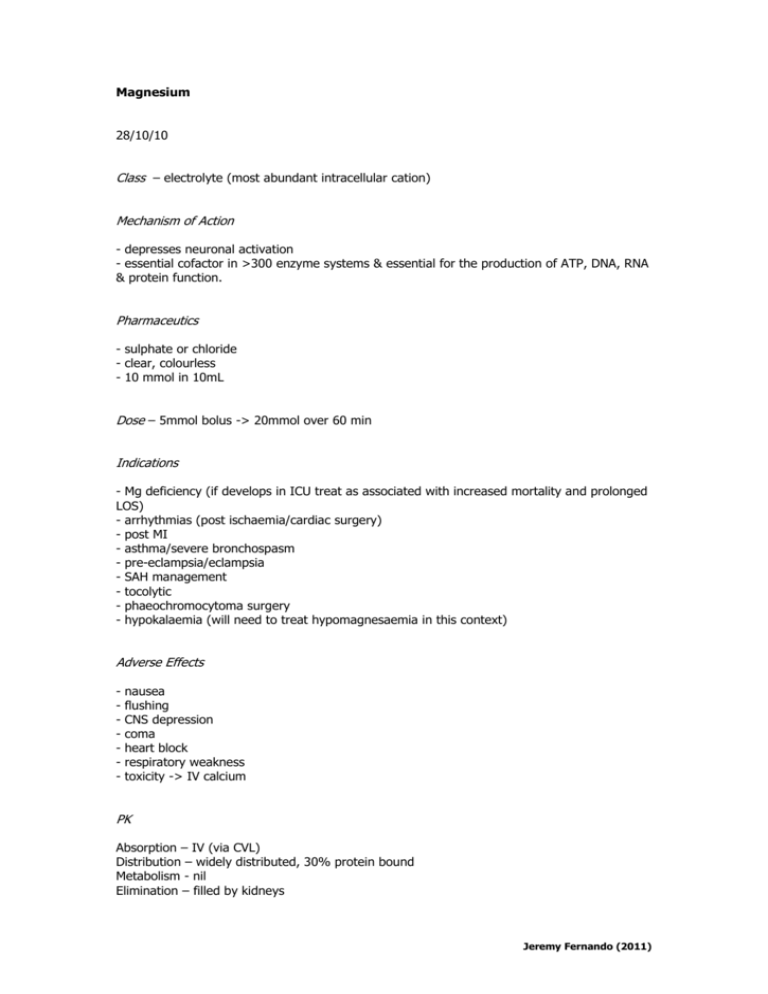
Magnesium 28/10/10 Class – electrolyte (most abundant intracellular cation) Mechanism of Action - depresses neuronal activation - essential cofactor in >300 enzyme systems & essential for the production of ATP, DNA, RNA & protein function. Pharmaceutics - sulphate or chloride - clear, colourless - 10 mmol in 10mL Dose – 5mmol bolus -> 20mmol over 60 min Indications - Mg deficiency (if develops in ICU treat as associated with increased mortality and prolonged LOS) - arrhythmias (post ischaemia/cardiac surgery) - post MI - asthma/severe bronchospasm - pre-eclampsia/eclampsia - SAH management - tocolytic - phaeochromocytoma surgery - hypokalaemia (will need to treat hypomagnesaemia in this context) Adverse Effects - nausea flushing CNS depression coma heart block respiratory weakness toxicity -> IV calcium PK Absorption – IV (via CVL) Distribution – widely distributed, 30% protein bound Metabolism - nil Elimination – filled by kidneys Jeremy Fernando (2011) Evidence – see Mg2+ document in Electrolytes Eclampsia - standard of care - halves rate of progression from pre -> eclampsia - drug of choice in treating eclamptic seizures – more effective than phenytoin or benziodiazepines (MAGPIE trial 2002, Cochrane review, 2003) - dose: 4g over 5min -> 1g/hr (aim for a level of 2-4mmol/L) Arrhythmias - likely to be effective in a subgroup of patients with total body Mg deficiency, however this group is hard to diagnose. - post cardiac surgery -> meta-analyses have shown that IV Mg decreases occurrence of post of AF and ventricular arrhythmias - not yet currently endorsed by the AHA/European Heart Association - may be as effective as amiodarone in treating rapid AF (Critical Care Med, 1995) - recommended for treatment of Torsades De Pointes, but no RCT on this. - effective in digitalis induced arrhythmias Post Myocardial Infarction - controversial (not widely accepted) conflicting evidence early trials (LIMIT2) showed a mortality benefit later trials (ISIS4, MAGIC) were unable to reproduce findings Asthma/Bronchospasm - improves FEV1 and PEFR in some patients (those at severe end of spectrum) no evidence to support improvement in mortality of benefit in selected patients ?maybe more effective in paediatric patients dose = 5-10mmoL over 20 min Cochrane review, 2000 more trials needed SAH Management - rat models demonstrate effectiveness of IV Mg in reversing induced vaspasm (Stroke, 1991) Jeremy Fernando (2011)

